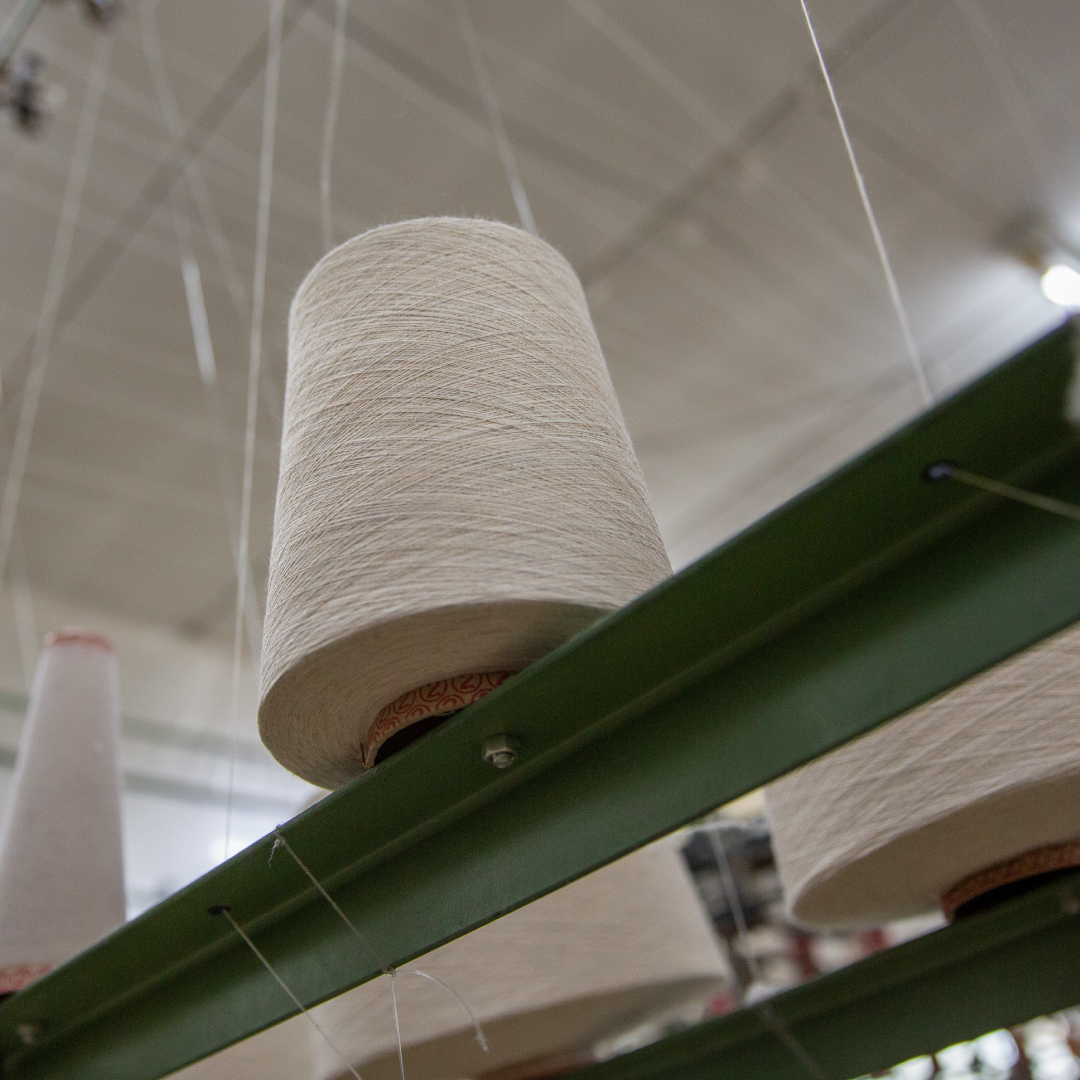



日本各地の工場を旅しながら、ふんわりと甘く編まれた生地。すでにほつれや破れに強い、充分なタフさを兼ね備えていますが、更に丈夫に仕上げる鍵となるのが縫製です。日本の職人によるこだわりの縫製技術は、耐久性にも重要なポイントとなります。
パーカー、グローブ、帽子、パンツ、スウェットシャツ。
それぞれのカタチによって、消耗されやすい箇所や弱点も様々ですが、一つ一つ丁寧に縫製を仕上げることで耐久性のあるアイテムに仕上げます。完成されたケパニの表情には、柔らかさの中に未来を見据えた頼もしさも。
こうして、旅先での数々の想いがカタチとなり、ようやくケパニはあなたの手元に届きます。
ur soft fabric is completed while traveling between factories in various places in Japan. Although the fabric is already sufficiently resistant against fraying and tearing at this stage, sewing is the key to giving it even more durability. The special sewing techniques employed by Japanese artisans also play an important role in determining the durability.
Hoodies, gloves, hats, pants, and sweatshirts.
Because each shape has its own areas that tend to be weaker or wear out faster, we carefully manufacture each garment individually to improve durability. Once a Kepani product is finished, it also demonstrates a sense of reliability with an eye to the future amid its tenderness.
In this manner, the various wishes that have arisen throughout the journey take shape in the form of the Kepani product that is delivered to you.

ヴィンテージとリサイクルの先駆けとして人気の高いラフィ糸。大阪の老舗繊維工場で作られています。
サスティナブルな知恵から生まれたラフィー糸は、超長綿のトルファンと短い繊維を多く含むギザアメリカの落ち綿を合わせて出来上がります。
本来ならば廃棄されるはずの落ち綿ですが、職人の技と知恵から新たに生まれた日本繊維の逸品です。
二つの綿を合わせることで、ケパニの特徴でもある柔らかな表情と独特な風合いを表現することができました。
Raffy yarn is very popular as an innovation that bridges the worlds of vintage clothing and recycling. It is made in a long-established textile factory in Osaka.
This Raffy yarn, which is a product of sustainable wisdom, is produced by combining extra-long staple cotton from Turpan with cotton waste of the Giza and American varieties, which contain many short fibers.
Although cotton waste is usually disposed, it is reborn here as an exquisite Japanese textile thanks to the skill and wisdom of artisans.
By combining these types of cotton, we were able to produce our unique texture and gentle appearance, which can be considered Kepani's specialty.



大阪で生まれたラフィ糸は、のどかな田園風景と交わるメリヤスの産地、和歌山にて加工されます。
72本の糸玉から一本一本の糸を紡ぎ、コンマ単位でシンカー編み機の糸を調整することで、吊り編みに近い風合いを作ることができます。ゆったりと且つ、精密に編み込まれたスウェット生地は、柔軟性と伸縮性に富んでいて、それでなお形崩れしにくいのが大きな特徴です。
仕上がった生地は職人が一つ一つ丁寧にチェックし、次の加工場へと送ります。
Once it is produced in Osaka, the Raffy yarn is then processed in Wakayama, a peaceful rural area that was a production site for knitted garments that were known as meriyasu
It is possible to produce a texture that is similar to that of a tsuri-ami loopwheeled garment by spinning each individual thread from a ball of 72 threads and adjusting the threads with minute detail using a knitting machine with a sinker. This sweatshirt fabric that is knitted both loosely and precisely really stands out for the fact that it retains its shape well, despite being very flexible and stretchable.
Artisans carefully check every piece of fabric that is produced before it moves on to the next factory for more processing.
和歌山で生まれたスウェット生地は、いよいよ三重県の加工工場へと旅します。
三重県の起毛加工工場では、肌に触れる生地の内側に裏起毛加工を施します。職人による特殊な加工技術によって、綿本来の柔らかさを最大限に活かした裏起毛は、素肌に優しく寄り添うような感覚を実現しました。
起毛による優れた保湿効果と抜群の肌馴染みは、従来のスウェットのイメージを根底から覆す着心地となっています。
The sweatshirt fabric that is produced in Wakayama finally heads to the processing factory in Mie Prefecture.
At the nap-raising factory in Mie Prefecture, the inside surface of the fabric that touches the skin is processed to have brushed lining. The brushed lining, which makes the most of the natural softness of the cotton through specialized processing techniques applied by artisans, feels as though it is gently cozying up to your bare skin.
The raised nap produces excellent moisture retention and perfect harmony with your skin that combine for a level of comfort that will turn conventional wisdom about sweats on its head.
日本各地の工場を旅しながら、ふんわりと甘く編まれた生地。すでにほつれや破れに強い、充分なタフさを兼ね備えていますが、更に丈夫に仕上げる鍵となるのが縫製です。日本の職人によるこだわりの縫製技術は、耐久性にも重要なポイントとなります。
パーカー、グローブ、帽子、パンツ、スウェットシャツ。
それぞれのカタチによって、消耗されやすい箇所や弱点も様々ですが、一つ一つ丁寧に縫製を仕上げることで耐久性のあるアイテムに仕上げます。完成されたケパニの表情には、柔らかさの中に未来を見据えた頼もしさも。
こうして、旅先での数々の想いがカタチとなり、ようやくケパニはあなたの手元に届きます。
ur soft fabric is completed while traveling between factories in various places in Japan. Although the fabric is already sufficiently resistant against fraying and tearing at this stage, sewing is the key to giving it even more durability. The special sewing techniques employed by Japanese artisans also play an important role in determining the durability.
Hoodie, gloves, hats, sweatpants, and sweatshirts.
Because each shape has its own areas that tend to be weaker or wear out faster, we carefully manufacture each garment individually to improve durability. Once a Kepani product is finished, it also demonstrates a sense of reliability with an eye to the future amid its tenderness.
In this manner, the various wishes that have arisen throughout the journey take shape in the form of the Kepani product that is delivered to you.


ヴィンテージとリサイクルの先駆けとして人気の高いラフィ糸。大阪の老舗繊維工場で作られています。
サスティナブルな知恵から生まれたラフィー糸は、超長綿のトルファンと短い繊維を多く含むギザアメリカの落ち綿を合わせて出来上がります。
本来ならば廃棄されるはずの落ち綿ですが、職人の技と知恵から新たに生まれた日本繊維の逸品です。
二つの綿を合わせることで、ケパニの特徴でもある柔らかな表情と独特な風合いを表現することができました。
Raffy yarn is very popular as an innovation that bridges the worlds of vintage clothing and recycling. It is made in a long-established textile factory in Osaka.
This Raffy yarn, which is a product of sustainable wisdom, is produced by combining extra-long staple cotton from Turpan with cotton waste of the Giza and American varieties, which contain many short fibers.
Although cotton waste is usually disposed, it is reborn here as an exquisite Japanese textile thanks to the skill and wisdom of artisans.
By combining these types of cotton, we were able to produce our unique texture and gentle appearance, which can be considered Kepani's specialty.

大阪で生まれたラフィ糸は、のどかな田園風景と交わるメリヤスの産地、和歌山にて加工されます。
72本の糸玉から一本一本の糸を紡ぎ、コンマ単位でシンカー編み機の糸を調整することで、吊り編みに近い風合いを作ることができます。ゆったりと且つ、精密に編み込まれたスウェット生地は、柔軟性と伸縮性に富んでいて、それでなお形崩れしにくいのが大きな特徴です。
仕上がった生地は職人が一つ一つ丁寧にチェックし、次の加工場へと送ります。
Once it is produced in Osaka, the Raffy yarn is then processed in Wakayama, a peaceful rural area that was a production site for knitted garments that were known as meriyasu
It is possible to produce a texture that is similar to that of a tsuri-ami loopwheeled garment by spinning each individual thread from a ball of 72 threads and adjusting the threads with minute detail using a knitting machine with a sinker. This sweatshirt fabric that is knitted both loosely and precisely really stands out for the fact that it retains its shape well, despite being very flexible and stretchable.
Artisans carefully check every piece of fabric that is produced before it moves on to the next factory for more processing.

和歌山で生まれたスウェット生地は、いよいよ三重県の加工工場へと旅します。
三重県の起毛加工工場では、肌に触れる生地の内側に裏起毛加工を施します。職人による特殊な加工技術によって、綿本来の柔らかさを最大限に活かした裏起毛は、素肌に優しく寄り添うような感覚を実現しました。
起毛による優れた保湿効果と抜群の肌馴染みは、従来のスウェットのイメージを根底から覆す着心地となっています。
The sweatshirt fabric that is produced in Wakayama finally heads to the processing factory in Mie Prefecture.
At the nap-raising factory in Mie Prefecture, the inside surface of the fabric that touches the skin is processed to have brushed lining. The brushed lining, which makes the most of the natural softness of the cotton through specialized processing techniques applied by artisans, feels as though it is gently cozying up to your bare skin.
The raised nap produces excellent moisture retention and perfect harmony with your skin that combine for a level of comfort that will turn conventional wisdom about sweats on its head.